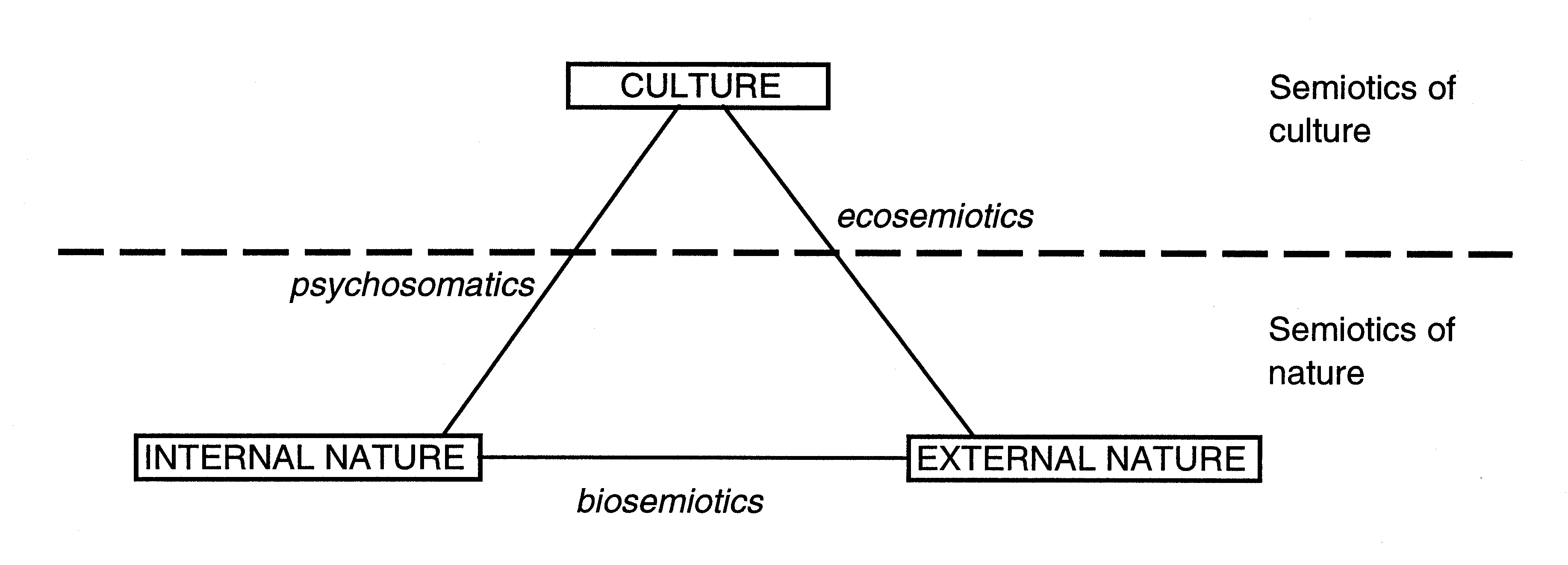“General Semiotics and Biosemiotics”
“St. Kirik and Julita”, Asenovgrad, Bulgaria
Guest-lecturers: Prof. Frederic Stjernfelt (Denmark), Prof. Kalevi Kull (Estonia), Dr. Vana Tentokali (Greece), Prof. Dagmar Schmauks (Germany)
Semiotic ecology: different natures
in the semiosphere
Kalevi Kull
Alles Lebendige bildet eine Atmosphäre um sich her.
J. W. Goethe (1977: 35)
"Natur! ... Wir leben mitten in ihr, und sind ihr fremde. Sie spricht unaufhörlich mit uns, und verrät uns ihr Geheimnis nicht." These are the words from G. C. Tobler's prose fragment "Die Natur", which he wrote after visiting Goethe in 1781 (Goethe 1977: 29). The idea that nature speaks, i.e., has a communicative characteristic, was quite common in romanticism, and has been expressed also by F. W. J. Schelling (cf. Warnke 1998).
...
Defining ecosemiotics
The term 'ecosemiotics' (also 'ecological semiotics', 'semiotic ecology') still does not appear in the textbooks and reviews of, for instance, T. A. Sebeok (1997b), or J. Deely (1990). Although, the term was already used in the 6th International Congress of Semiotics in Guadalajara (Mexico) in 1997 and in a recent meeting in Tartu. Also, it appears in the first volume of "A Handbook on the Sign-Theoretic Foundations of Nature and Culture" (Tembrock 1997) as 'Ökosemiose' in German and 'environmental semiosis' in English. It was also used by J. Hoffmeyer (1997) in the form 'eco-semiotic'.
...
To describe the realm of biosemiotics, J. Hoffmeyer (1996a: 96) builds a triangle which consists of culture, external nature, and internal nature. According to Hoffmeyer, the relationship between culture and internal nature is the sphere of psychosomatics, the relationship between internal and external nature is the field of biosemiotics, and the relationship between culture and external nature is the environmental sphere. This latter can also be named an ecosemiotic area (Fig. 1).

...
Figure 1. Defining the sphere of ecosemiotics, in relation to biosemiotics and psychosomatics. Under internal nature we mean the biological organism, and under external nature all the living and nonliving environment.
Biosemiotics is defined as an analysis of living systems as sign systems, the origin of sign being one of the problems in its competence. It investigates semiosis in the living which is much broader than human life, i.e. which exists beyond the mental (conscious) life, assuming the semiotic threshold to be close to where life begins.
...
The main message of this article is that ecological knowledge is not sufficient to understand or solve the ecological problems which humans face, since these are consequences of certain deeply semiotic and cultural processes, intertwined with ecological and biological ones. There exist different types of cultures, among them some which have been able to create balanced relationships with nature, and many others which automatically create environmental problems for themselves. Thus, the understanding and possible solution of ecological conflicts assumes knowledge of both cultural and biological parts, which means that cultural semiotics and ecology can constructively interact in this field. Consequently, ecosemiotics seems to be a possibility for facing these most important, and most difficult challenges of the contemporary world.
...
original page quote: http://www.zbi.ee/~kalevi/ecosem.htm





